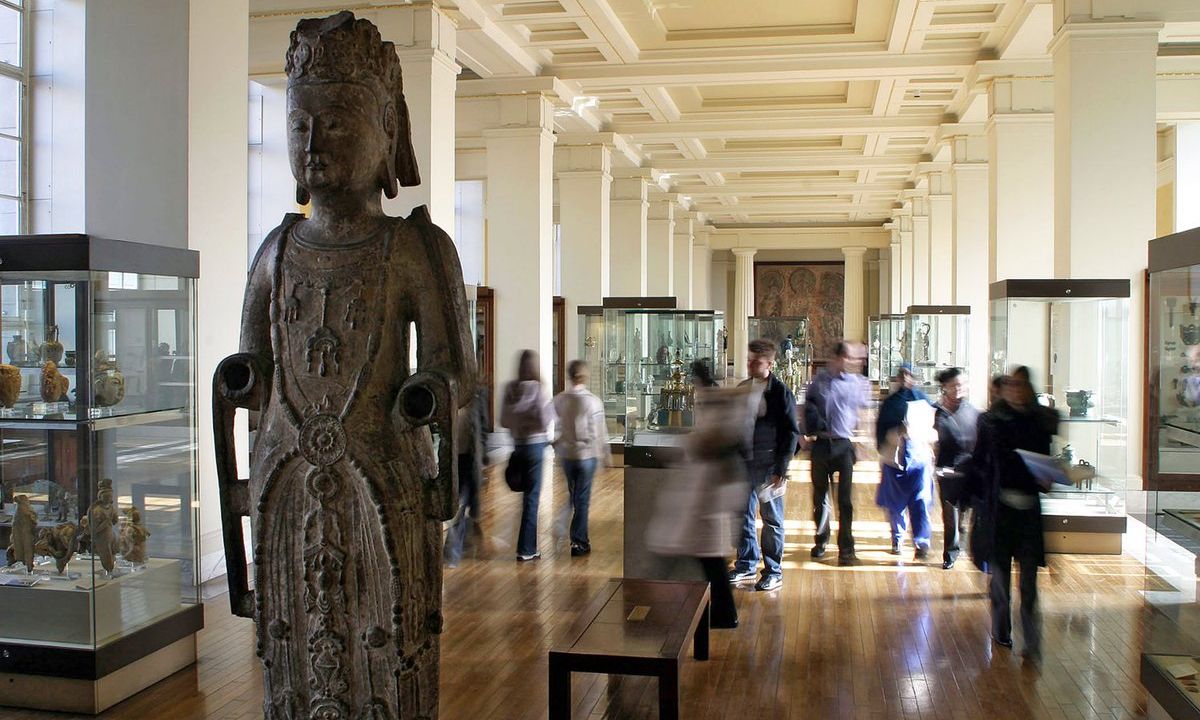The British Museum's Southeast Asian gallery. Courtesy of British Museum / Twitter
The Cambodian government is calling on the British Museum and Victoria and Albert Museum (V&A) in London to investigate the provenance of antiquities in their collections allegedly removed from ancient temples and heritage sites. According to the BBC, the focus on the UK marks the latest phase in the Cambodians' campaign to recover the country's precious artefacts that were pillaged during the late 20th-century civil war and then sold on to Western museums and private collectors.
The Cambodian culture minister, Phoeurng Sackona, says in a letter to her UK counterpart, Nadine Dorries, that many of these artefacts “passed through the hands of [the late dealer] Douglas Latchford”. Brad Gordon, the Cambodian Ministry of Culture's chief legal counsel and the head of its investigative team, says: “We are not sure yet [about] the specific number of Cambodian cultural properties at these museums which passed through his hands.”
A spokeswoman for the V&A says that none of the Cambodian objects in its collection were acquired (purchased or donated) from Douglas Latchford. Latchford always denied any wrongdoing and any involvement in smuggling.
Gordon tells The Art Newspaper: “The British Museum has more than 100 Cambodian cultural properties. We have asked the British Museum in a letter dated 12 May for extensive information on these objects. Cambodia has not issued any licences or other documentation we are aware of for these objects to be taken out of Cambodia.”
The Cambodian government is subsequently asking the British Museum to prove it has legal title to these objects. “We are not aware of any Cambodian cultural properties on display at the British Museum and believe the Cambodian cultural objects are in storage,” Gordon adds.
The British Museum says in a statement: “We are open and transparent about the heritage of objects in our permanent collection. Establishing the provenance of an object has been an integral part of the museum’s acquisition process for decades. Through this research, we also endeavour to find any possible ethical or legal issues. Each object goes through a careful and thorough process before trustees make a decision to acquire it.” The museum will consider “carefully and respectfully” any correspondence from the Cambodian government.
The V&A meanwhile owns more than 50 Cambodian cultural items, Gordon says. “We have asked the V&A in a letter dated 12 May for extensive information on these objects. Our position with respect to the V&A is the same as mentioned above for the British Museum. However, we note the V&A has at least 15 objects on display.” he says.
The Cambodian government has requested transparent disclosure of the provenance background so that it can discuss “together the proper ownership of these Cambodian cultural properties and in some cases, will be requesting for return of looted Cambodian cultural properties to Cambodia”, he adds. Both letters cite the Hague Convention, which aims to protect cultural property during armed conflicts.
The V&A says in a statement: "We take steps to ensure as much information as possible about V&A objects is available to researchers globally. Information about our Cambodian objects, including their provenance, has been accessible on our online database since its launch in 2009. Research into our collections is continuous and new information is added to the database."
The statement continues: "We have not yet received any correspondence from the Cambodian government, but we are interested to see any information that sheds new light on the objects in our care and would welcome the opportunity to engage in constructive dialogue."

